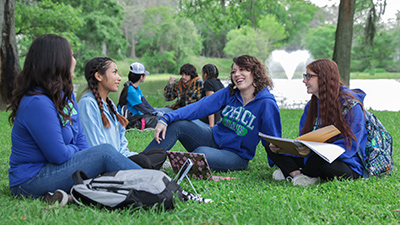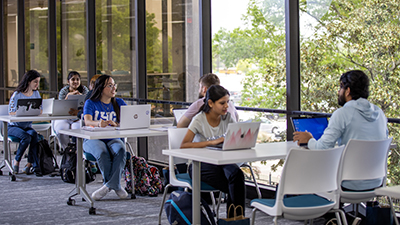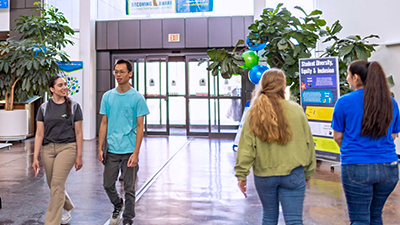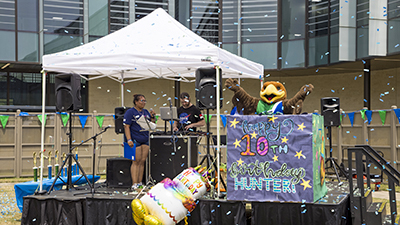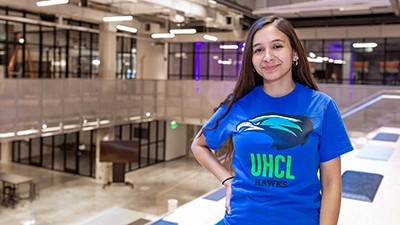
Speaker Bios
Keynote Speaker: Scott Parazynski, M.D.
Founder & CEO, OnwardAir, Inc.; former NASA Astronaut
Dr. Scott Parazynski is a highly decorated physician, astronaut, best-selling author (“The Sky Below”) and tech CEO. He is a widely sought after keynote speaker on innovation, risk management, mentorship and leadership under extreme adversity.
Dr. Parazynski has lived and traveled all over the world, spending many of his grade school years in places such as Senegal, Lebanon, Iran and Greece. A graduate of Stanford University and Medical School, he went on to train at Harvard and in Denver for a career in emergency medicine and trauma.
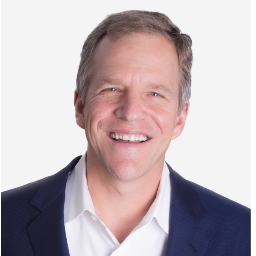
Read More About Dr. Parazynski
In 1992 he was selected to join NASA's Astronaut Corps and eventually flew 5 Space Shuttle missions and conducted 7 spacewalks. Mission highlights include a global ozone mapping flight; leading the first joint US-Russian spacewalk while docked to the Russian space station Mir; serving as Senator John Glenn's crewmate and "personal physician"; and assembly of the Canadian-built space station robotic arm.
In October 2007, he led the spacewalking team on STS-120, during which he performed 4 EVAs. The final EVA is regarded by many as one of the most challenging and dangerous ever performed. The tremendous coordinated effort in orbit and on the ground by Mission Control has been likened to the Space Shuttle and Space Station era's "Apollo 13 moment." He was inducted into the US Astronaut Hall of Fame in 2016.
In addition to being a diver and accomplished mountaineer, Dr. Parazynski is also a commercial, instrument, multiengine and seaplane-rated pilot. On May 20, 2009, he became the first astronaut to stand on top of the world, the summit of Mount Everest. As a life-long explorer, he and a colleague set the first bootprints adjacent the world’s youngest lava lake, inside the crater of Masaya Volcano in Nicaragua.
He is a prolific inventor/product developer, and serves on the Boards of several companies. He is Founder and CEO of OnwardAir, focused on the development of revolutionary electric aircraft (e-VTOL) and advanced human-machine interfaces designed to control everything from surgical robotics to spacecraft.
Adam Strang, Ph.D.
Product Area Lead - Air & Space Biosciences, U.S. Air Force Research Laboratory
Dr. Adam Strang is director of AFRL's STRONG (Signature Tracking for Optimized Nutrition and Training) Lab. He is a certified and licensed Athletic Trainer with clinical experience in musculoskeletal injury prevention and management. He also has a PhD in cognitive psychology, with expertise in neurocognitive testing, psychophysiology and human factors. To date, Dr. Strang has authored over 90 peer reviewed research articles and presentations.
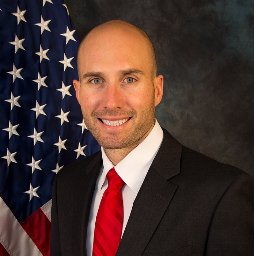
Alyssa Varanoske, Ph.D., CSCS
Human Performance Scientist, (H-3PO) Laboratory, KBR/NASA
Dr. Alyssa N. Varanoske is a Senior Human Performance Scientist for KBR in the Human Physiology, Performance, Protection, and Operations Laboratory (H-3PO) at NASA’s Johnson Space Center. She is currently the study lead of the Exploration Exercise Treadmill Requirements study, an interventional exercise study conducted on the International Space Station testing the physiological effects of using exploration-based exercise devices on astronaut health and performance.
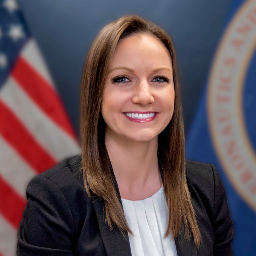
Read More About Dr. Varanoske
Dr. Varanoske is also the exercise lead for the Crew Health and Performance Exploration Analog (CHAPEA), a study designed to examine resource constraints and consequences associated with a year-long Mars surface analog mission by investigating changes in performance, physiology, behavior, immune function, and cognition. Additionally, she is responsible for assessing exercise countermeasure risks associated with NASA design reference missions as well as providing subject matter expertise regarding the efficacy of exercise countermeasures for protecting astronaut health on NASA programs (i.e., ISS, Artemis, Orion, Gateway).
Dr. Varanoske is a Certified Strength and Conditioning Specialist (CSCS) through the National Strength and Conditioning Association (NSCA) and holds a certificate in Advanced Quantitative Methodologies in Educational and Human Sciences. She also currently serves on the editorial board for Medicine & Science in Sports & Exercise (MSSE), the American College of Sports Medicine’s (ACSM) flagship journal. Prior to working at NASA, Dr. Varanoske was a postdoctoral research fellow in the Military Nutrition Division at the U.S. Army Research Institute of Environmental Medicine (USARIEM) and was subsequently a research fellow in the Military Performance Division at USARIEM. Her research primarily focused on investigating pharmacological and nutritional interventions to sustain Warfighter health, performance, and resiliency during strenuous operations, encompassing principles of exercise physiology, nutritional science, and human metabolism. She has been involved the design and execution of several federally funded studies in the areas of aerospace physiology and military nutrition and performance.
Dr. Varanoske earned her Ph.D. in Exercise Physiology and M.S. in Applied Exercise Physiology, both from the University of Central Florida, where she was a Research Assistant in the Human Performance Laboratory as well as a Teaching Associate, Teaching Assistant, and Adjunct Instructor. Throughout her time at UCF, her research focused on implementing nutritional supplementation strategies for optimizing physical performance, evaluating associations between performance and skeletal muscle biology, physiology, and morphology, using blood and muscle biomarkers to determine the efficacy of exercise and nutritional interventions, and methodological considerations for improving the validity of skeletal muscle morphological data.
Dr. Varanoske earned her B.S. from the University of Connecticut in Exercise Science, with minors in Biology and Nutrition for Exercise and Sport. Dr. Varanoske is a member of the ACSM, the NSCA, and the American Society for Nutrition (ASN). She has published over 70 peer-reviewed scientific manuscripts and abstracts presented at national and international meetings and has been the recipient of numerous awards and scholarships for her work.
Brian Prejean, Ph.D.
Lead, Exercise Physiology and Countermeasures, H-3PO Laboratory, KBR/NASA
Dr. Prejean is a Human Performance Scientist on KBR’s Human Health and Performance Contract in the Johnson Space Center’s Human Physiology, Performance, Protection, and Operations (H-3PO) laboratory and leads the Exercise Physiology and Countermeasures (EPC) technical area within the lab.

Read More About Dr. Prejean
Brian holds a B.S. in Exercise Physiology from Texas A&M University, and a M.S. and Ph.D. from the University of Texas at Arlington in Exercise Physiology and Kinesiology, respectively with a research focus in Applied Biomechanics, and is a Certified Strength and Conditioning Specialist through the National Strength and Conditioning Association. He also currently serves as a Risk Custodian for the muscle and aerobic deconditioning risks carried by NASA’s Human Systems Risk Board and is the Exercise Discipline Scientist for NASA’s Human Research Program.
The EPC team supports NASA’s human health and performance objectives for spaceflight in three primary areas: technology development, applied research, and exercise Subject Matter Expert (SME) support to human spaceflight program operations. The team’s overarching objective is to protect astronaut health and performance by understanding the mechanisms and consequences of spaceflight deconditioning in order to characterize mission risk as well as to optimize exercise countermeasure systems and interventions. Current efforts within the lab include the evaluation and certification of exercise systems designated for Artemis Lunar exploration missions; development of exercise system requirements for the Lunar pressurized rover vehicle; spaceflight and terrestrial research on the dose-response relationship of both spaceflight exposure as well as exercise interventions; development and implementation of standardized in-flight health and performance assessments; development of novel countermeasure technologies and strategies for optimizing astronaut health and performance outcomes.
James Pattarini, MD, MPH, FAsMA
Flight Surgeon, Program Medical Officer - Artemis Human Landing System, NASA - Johnson Space Center
Dr. Pattarini is an operational flight surgeon at NASA-JSC with a background in Internal Medicine and Aerospace Medicine. He served as Prime Crew Surgeon for 55 Soyuz, ISS Expeditions 56/57, and worked as Deputy Crew Surgeon for 49S, ISS Expeditions 50/51/52.

Read More About Dr. Pattarini
As a member of the Star City Medical Support Group, he has supported USOS astronaut training activities in Star City, Russia for extended periods since joining the NASA team in 2015. In 2019 Dr. Pattarini was named the lead physician for Artemis Human Landing System development, and he now serves as the Program Medical Officer for both HLS and the Lunar Gateway station. In addition to his Artemis program support roles, Dr. Pattarini also provides Crew Dragon launch/landing support as a console operator at SpaceX mission control in Hawthorne, CA.
Originally from Upstate New York, his educational background includes a B.S. in Evolutionary Biology from Syracuse University and an M.D. from the State University of New York at Buffalo. He completed a combined Internal Medicine/Aerospace Medicine residency program at the University of Texas Medical Branch (UTMB), where he received a Master of Public Health in 2013, and served as Chief Resident of the Internal Medicine Program prior to joining NASA in 2015. He holds board certifications in both specialties, and maintains clinical faculty privileges at a number of local hospitals in the greater Houston area. In addition to his ISS and Artemis program support duties, Dr. Pattarini currently serves as medical operations lead physician for occupant protection and dynamic loads.
Jason Norcross
Senior Scientist, (H-3PO) Laboratory, KBR
Jason Norcross is a senior environmental physiologist, working for KBR, in NASA’s Human Physiology, Performance, Protections and Operations (H-3PO) Laboratory. He works across several NASA developmental flight programs providing insight about human physiology in the midst of new vehicles and space suits. He also has active research interests across the H-3PO portfolio and is principal investigator of the Egress Fitness study, which is part of NASA’s CIPHER protocol, one of the largest integrated flight studies to date.
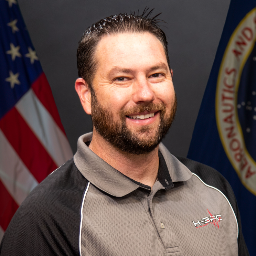
John Kennett
CEO, Physical Mind London
John Kennett has a unique mix of being aerospace engineer and exercise and rehabilitation specialist. He is the inventor of the next generation of astronaut and parastronaut multi-exercise countermeasures for long duration space exploration called HIFIm, High Frequency Impulse for Microgravity.

Read More About Mr. Kennett
Formerly a Concorde and Boeing 747 engineer, fulfilling numerous roles from commercial industrial instructor, accident investigator, Chairman of British Airways Engineering fleet H&S committee to lead business analyst: And as an exercise and rehabilitation specialist, co-owns an exercise rehabilitation centre in London, England; where they specialise in working with pre and post operative patients, conditioning sports people, to older clients with musculoskeletal issues, including osteoporosis; John is a university lecturer of anatomy, kinesiology, sports injuries and sports psychology. As Managing Director of Physical Mind London (PML) based in the UK, John independently designed and built HIFIm: and, working alongside with engineering partners, movie special effects company 2EFX (makers of Star Wars, Mission Impossible, Bond and Oscar winners for the movie 1917) - together they manufacture HIFIm to the specifications and needs of space agencies and private companies. HIFIm has become the United Kingdom’s flagship exercise countermeasure: The European Space Agency, European Astronaut Centre have all supported John and his HIFIm team, with ESA allocating all their astronaut time in zero gravity flight testing to the HIFIm team - a first in the history of ESA. John is superbly supported by the UK Space Agency, awarding 5 grants to PML; enabling two full parabolic flight campaigns, six zero gravity flights, delivering over 180 parabolas and more than 70 minutes of successfully testing HIFIm in zero gravity, enabling two world firsts and proving HIFIm is a space flight ready countermeasure. To date, John and his PML partners have been awarded a total of $3,700,000.00 USD in research funding. John recently lead PML to be awarded a $2,300,000.00 USD grant from the Canadian and UK Space Agencies, forging an International Bilateral agreement using HIFIm and collaborating on CSA’s C2M2 Lunar habitat programme. John has recently been made an Honorary Fellow at Salford University, Manchester in England.
Jorge Chávez, Ph.D.
Research Chemist, U.S. Air Force Research Laboratory
Jorge Chávez obtained a B.Sc. in Chemistry from the Pontifícia Universidad Católica del Perú, where he performed research in polymer chemistry, and a Ph.D. in Chemistry from the University of Florida, working in the synthesis and characterization of nanomaterials. He continued his career as an ORISE postdoctoral researcher at the Air Force Research Laboratory in Dayton, OH, working under the supervision of Dr. Morley Stone. Dr. Chávez is currently a Principal Investigator in the Airman Systems Directorate, 711th Human Performance Wing (711 HPW), Air Force Research Laboratory. Jorge's research focuses on developing sensing capabilities to monitor stressors that affect Airmen’s and Guardians’ performance. He is also the technical lead for the Health and Performance Sensing and Assessment Core Research Area in the Air and Space Biosciences Division in the 711 HPW.
Clearance #: 88ABW-2020-0632, this material was cleared on 20 Feb 2020.
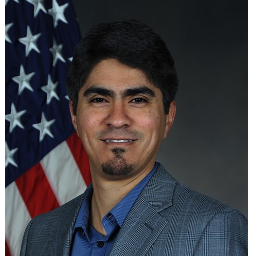
Kathleen "Kate" Rubins, Ph.D.
Astronaut, NASA
Kathleen Rubins was selected by NASA in 2009. Rubins completed her first spaceflight on Expedition 48/49, where she became the first person to sequence DNA in space. She holds a Bachelor of Science in Molecular Biology from the University of California and a Ph.D. in Cancer Biology from Stanford University Medical School Biochemistry Department and Microbiology and Immunology Department. Dr. Rubins conducted her undergraduate research on HIV-1 integration in the Infectious Diseases Laboratory at the Salk Institute for Biological Studies. She worked as a Fellow/Principal Investigator at the Whitehead Institute for Biomedical Research and headed 14 researchers studying viral diseases that primarily affect Central and West Africa. Rubins most recently served aboard the International Space Station as flight engineer for Expedition 63/64. Across her two flights, she has spent a total of 300 days in space, the fourth most days in space by a U.S. female astronaut.

Read More About Dr. Rubins
Personal
Born in 1978 in Farmington, Connecticut, and raised in Napa, California, where her father, Jim, still resides. Her mother, Ann Hallisey resides in Davis, California. She enjoys running, cycling, swimming, flying, scuba diving and reading.
Education
Graduated from Vintage High School in 1996, received a Bachelor of Science degree in Molecular Biology from the University of California, San Diego, in 1999 and a Ph.D. in Cancer Biology in 2005 from Stanford University Medical School Biochemistry Department and Microbiology and Immunology Department.
Experience
Dr. Rubins conducted her undergraduate research on HIV-1 integration in the Infectious Diseases Laboratory at the Salk Institute for Biological Studies. She analyzed the mechanism of HIV integration, including several studies of HIV-1 Integrase inhibitors and genome-wide analyses of HIV integration patterns into host genomic DNA. She obtained her Ph.D. from Stanford University and, with the U.S. Army Medical Research Institute of Infectious Diseases and the Centers for Disease Control and Prevention, Dr. Rubins and colleagues developed the first model of smallpox infection. She also developed a complete map of the poxvirus transcriptome and studied virus-host interactions using both invitro and animal model systems. Dr. Rubins then accepted a Fellow/Principal Investigator position at the Whitehead Institute for Biomedical Research (MIT/Cambridge, Massachusetts) and headed a lab of 14 researchers studying viral diseases that primarily affect Central and West Africa. She traveled to the Democratic Republic of Congo to conduct research and supervise study sites. Work in the Rubins Lab focused on poxviruses and host-pathogen interaction as well as viral mechanisms for regulating host cell mRNA transcription, translation and decay. In addition, she conducted research on transcriptome and genome sequencing of filoviruses (Ebola and Marburg) and Arenaviruses (Lassa Fever) and collaborative projects with the U.S. Army to develop therapies for Ebola and Lassa viruses. Dr. Rubins has published and presented her work in numerous papers at international scientific conferences and in scientific journals.
NASA Experience
Rubins was selected in July 2009 as one of 9 members of the 20th NASA astronaut class. Her training included scientific and technical briefings, intensive instruction in International Space Station systems, spacewalks, robotics, physiological training, T 38 flight training and water and wilderness survival training.
Spaceflight Experience
Expeditions 48 and 49 (July 2016 through October 2016.)On July 7th, 2016, Dr. Rubins launched from the Baikonur Cosmodrome in Kazakhstan to the International Space Station aboard the first test flight of the new Soyuz MS spacecraft. Together the international crew of Expeditions 48 and 49 conducted or participated in more than 275 different scientific experiments including research in molecular and cellular biology, human physiology, fluid and combustion physics, Earth and space science and technology development. Dr. Rubins was the first person to sequence DNA in space, eventually sequencing over 2 billion base pairs of DNA during a series of experiments to analyze sequencing in microgravity. Dr. Rubins also grew heart cells (cardiomyocytes) in cell culture, and performed quantitative, real-time PCR and microbiome experiments in orbit. Dr. Rubins conducted two spacewalks totaling 12 hours, 46 minutes. During her first spacewalk, Rubins and Jeff Williams installed the first International Docking Adapter, a new docking port for U.S. commercial crew spacecraft. During the second, they performed maintenance of the station external thermal control system and installed high-definition cameras, enabling never-before seen images of the planet and space station. Jeff Williams and Rubins successfully captured SpaceX Dragon commercial resupply spacecraft and then returned science experiment samples to earth. During Expedition 49, Rubins and crewmate Takuya Onishi grappled Orbital ATK’s Cygnus resupply spacecraft, providing several tons of supplies and research experiments for future work on the orbital outpost. Expeditions 63 and 64 (October 2020 through April 2021) On October 14, 2020, Dr. Rubins launched from the Baikonur Cosmodrome in Kazakhstan to the International Space Station aboard the Soyuz spacecraft. Dr. Rubins spent hundreds of hours working on new space station experiments, building on investigations she conducted during her first mission, including heart research and multiple microbiology studies. She also advanced her work in DNA sequencing, which could allow astronauts to diagnose an illness in space or identify microbes growing at the space station. Rubins worked on the Cardinal Heart experiment, which studies how changes in gravity affect cardiovascular cells at the cellular and tissue levels. Results could provide new understanding of heart problems on Earth, help identify new treatments, and support development of screening measure to predict cardiovascular risk prior to spaceflight. She returned safely to Earth on April 17, 2021 spending 185 days in space and conducted two spacewalks. During Dr. Rubins two spaceflight missions, she has logged in a total of 300 days in space and conducted four spacewalks.
Karina Marshall-Goebel, Ph.D.
Co-Lead, Human Physiology, Performance, Protection, and Operations (H-3PO) Laboratory, NASA
Karina Marshall-Goebel, PhD is the Head of Research for the Human Physiology, Performance, Protection, and Operations (H-3PO) Laboratory at NASA JSC and co-leads the Systems Capabilities Leadership Team Roadmap on Spacesuit Physiology and Performance.

Read More About Dr. Marshall-Goebel
Dr. Marshall-Goebel holds a PhD in Physiology from the University of Cologne (Cologne, Germany) and has held research positions at the German Aerospace Center (DLR), Harvard Medical School, Massachusetts General Hospital, and the NASA Cardiovascular & Vision Laboratory. Dr. Marshall-Goebel was awarded a place on the Forbes 30 under 30 list for Healthcare and Science in 2017, was a recipient of the 2019 Aerospace Medical Association Tredici Award, 2022 NASA Space Flight Awareness Award, 2022 NASA JSC Director’s Innovation Award, and the 2022 NASA Early Career Achievement Medal.
Keegan Yates, Ph.D.
Injury Biomechanics Specialist, KBR
Dr. Keegan Yates is an injury biomechanics specialist for KBR at NASA-JSC. He works in the Human Physiology, Performance, Protection Operation (H-3PO) Laboratory on the Applied Injury Biomechanics team. His main area of focus is finite element analysis of crash test dummies and human body models during impact events such as Earth return landings. He holds a B.S. in Biomedical Engineering from Michigan Technological University, and a Ph.D. in Biomedical Engineering from Virginia Tech.

Liz Warren, Ph.D.
Director of Research Development, Orbital Reef, Blue Origin
Liz Warren, Ph.D. is a physiologist with expertise in the effects of spaceflight on humans. She has been involved in spaceflight research for over 25 years and is currently the Director of Research Development for Orbital Reef at Blue Origin.

Read More About Dr. Warren
Dr. Warren was born and raised in the San Francisco Bay Area, and attended the University of California at Davis for both her undergraduate and doctoral degrees in physiology. For her doctoral work, she investigated the effects of gravity as a continuum on energy balance in rats. She completed post-doctoral work in cancer biology at the San Francisco Veterans Affairs Laboratory of Cell Growth, and in the Neuroscience Laboratory at NASA’s Johnson Space Center. She has performed a variety of roles at NASA, including serving as Deputy Project Scientist for the NASA Bed Rest and Artificial Gravity Projects. Dr. Warren also spent several years as an Operations Lead in Mission Control for the ISS Medical Project. Dr. Warren most recently managed research on the ISS National Laboratory as a Senior Program Director at the Center for the Advancement of Science in Space.
Luca Parmitano
Astronaut, European Space Agency (ESA)
In February 2011, Luca was assigned as a flight engineer to Italian space agency ASI's first long-duration mission on the International Space Station. He was launched on a Soyuz launcher from Baikonur, Kazakhstan on 28 May 2013. Luca spent 166 days in space, personally conducting over 20 experiments, and took part in two spacewalks and the docking of four spacecraft during his ‘Volare’ mission. He landed safely back on Earth on 11 November 2013. Luca was launched to the International Space Station for his second mission in the Russian Soyuz MS-13 spacecraft on 20 July 2019 – the 50th anniversary of the first human lunar landing – and returned 6 February 2020. His 201-day mission saw him take on the role of Space Station commander for Expedition 61 – becoming the third European and first ever Italian International Space Station commander. He also conducted a series complex spacewalks to repair the cosmic-particle-hunting Alpha Magnetic Spectrometer instrument, AMS-02. In total, Luca carried out four spacewalks, totaling 25 hours and 30 minutes.
He has now conducted six spacewalks in his career, totaling 33 hours and 9 minutes. During Beyond, Luca supported more than 50 European experiments and 200 international experiments in space. Other highlights including performing the first ‘live DJ session’ in Earth orbit, addressing world leaders at the United Nations Climate Change Conference COP 25 and talking to Nobel Laureates about exoplanets and the chemistry of batteries.

Read More About Luca Parmitano
Luca graduated from the Liceo Scientifico Statale 'Galileo Galilei' in Catania, Italy, in 1995. In 1999, he completed a bachelor’s degree in political sciences at the University of Naples Federico II, Italy, with a thesis on international law. In 2000, he graduated from the Italian Air Force Academy, in Pozzuoli, Italy. Luca completed basic flight training with the US Air Force at the Euro-NATO Joint Jet Pilot Training in Sheppard Air Force Base, Texas, US, in 2001. In 2002 he qualified on the A-11 at the 101st Operational Conversion Unit. In the same year, he completed the JCO/CAS course with the USAFE in Sembach, Germany. In 2003, he qualified as Electronic Warfare Officer at the ReSTOGE in Pratica di Mare, Italy. He completed the Tactical Leadership Programme in Florennes, Belgium, in 2005. In July 2009, Luca completed a master’s degree in experimental flight test engineering at the Institute Superieure de l’Aeronautique et de l’Espace in Toulouse, France.
Special honours: Luca was awarded a Silver Medal to the Aeronautical Valour by the President of the Italian Republic in 2007. He was recognised a ‘Commendatore al Merito della Repubblica’ by the President of the Italian Republic in 2013.
Experience: Following completion of undergraduate pilot training in 2001, Luca flew the AM-X aircraft with the 13th Group, 32nd Wing in Amendola, Italy, from 2001 to 2007. During that time, he obtained all aircraft qualifications, including Combat Ready, day/night air to air refuelling, Four Ship Leader and Mission Commander/Package Leader. Within the 13th Group he served as Chief of Training Section and Commander of the 76th Flight. He was also the 32nd Wing Electronic Warfare Officer. In 2007, he was selected by the Italian Air Force to become a test pilot.
He trained as an Experimental Test Pilot at EPNER, the French test pilot school in Istres. Luca was promoted to the role of Colonel in the Italian Air Force ahead of his Beyond mission in 2019. He has logged more than 2000 hours flying time, is qualified on more than 20 types of military airplanes and helicopters, and has flown over 40 types of aircraft. Luca was selected as an ESA astronaut in May 2009.
Luca was the Ground IV (lead EVA communicator) during fellow ESA astronaut Thomas Pesquet’s first spacewalk on his Proxima mission, which took place on 13 January 2017. The spacewalk was completed in 5 hours and 58 minutes.
Patrick Estep
Human Performance Engineer, GeoControl Systems - NASA
Patrick Estep is a graduate from the University of Alabama at Birmingham, where he earned a Master's in biomedical engineering. During his tenure at the Johnson Space Center, he has supported numerous projects within the Human Physiology, Performance, Protection, and Operations (H-3PO) Laboratory to develop and characterize human performance and adaptations to exploration EVA tasks and simulations, implement systems to support bioinformatics and decision support technologies, and validate operational prebreathe protocols for future exploration EVAs. Patrick is currently the technical area lead for the Spacesuits and Exploration Operations team within the H-3PO Lab.

Paul Comfort, Ph.D., CSCS*D, ASCC
Professor of Strength and Conditioning, University of Salford (UK); Adjunct Professor, Edith Cowan University (Western Australia)
Dr. Paul Comfort is a Professor of Strength and Conditioning at the University of Salford (UK) and an adjunct Professor at Edith Cowan University (Western Australia). Dr. Comfort is a founder member and accredited member of the United Kingdom Strength and Conditioning Association, and a certified member with the National Strength and Conditioning Association (NSCA).

Read More About Dr. Comfort
Professor Comfort was also an NSCA board member from 2020-2023. He regularly consults with numerous sports teams and organizations and has authored / co-authored >150 peer reviewed journal articles. Paul is also co-editor of the textbooks, ‘Advanced Strength and Conditioning: an evidence-based approach’, ‘Performance Assessment for strength and Conditioning’ and ‘Laboratory Manual for Strength and Conditioning’.
Paul Goldberg, M.S.
Human Performance, Star Harbor Academy
Paul earned his BS at Western State College of Colorado and his MS in Nutrition and Exercise at Colorado State University. For the past 13 years he has served as the Human Performance Director for 10th Special Forces Group, in addition to working for Naval Special Warfare Development Group for 14 months. Coach Goldberg also worked as Strength Coach & Dietitian for the Colorado Avalanche ’99-‘11. Paul also served as Assistant Strength Coach and Sports Dietitian at Colorado State University for four years and as Head Strength Coach and Sports Dietitian at Eastern Michigan University for one year. Paul has certified as a Registered Dietitian and Certified Strength and Conditioning Specialist.

Rachel Thompson, Ph.D.
Human Performance Engineer, KBR/NASA
Dr. Rachel Thompson is a Human Performance Engineer for KBR at NASA-JSC. She works in the Human Physiology, Performance, Protection Operation (H-3PO) Laboratory in the technical area of Applied Injury Biomechanics. She has spent her career on and is very passionate about injury biomechanics, injury prevention and occupant protection. She holds a B.S. in Health and Environmental Science from Slippery Rock University, a M.S., and a Ph.D. in Biomedical Engineering from the University of Tennessee at Knoxville.
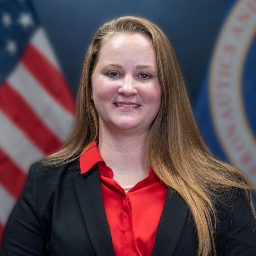
Rahul Goel
Health and Performance Research on Axiom Missions

Randolph "Komrade" Bresnik
Astronaut and U.S. Marine Corps Colonel, Ret. NASA
Randy "Komrade" Bresnik was selected as an astronaut in 2004. He was commissioned as a Second Lieutenant in the U.S. Marine Corps in May 1989. During his military career, he became an F/A-18 Test Pilot and was eventually deployed to Kuwait to fly combat missions in support of Operation Iraqi Freedom. A veteran of STS-129, he has also trained as a Cave-a-naut with the European Space Agency to test living deep beneath the Earth's surface as well as an Aquanaut for NASA's Extreme Environment Mission Operation (NEEMO) 19. Bresnik most recently served as the Commander of the International Space Station for Expedition 53 and flight engineer for Expedition 52. Currently, he serves as the Assistant-to-the-Chief of the Astronaut Office for Exploration managing the development and testing of everything that will operate beyond low earth orbit on Artemis missions.
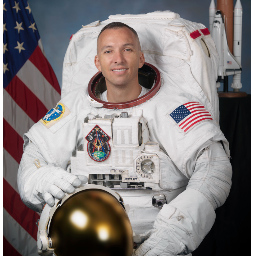
Read More About Col. Bresnick
Personal
Born September 11, 1967 in Fort Knox, Kentucky. Considers Santa Monica, California to be his hometown. Married to the former Rebecca Burgin of Pompton Plains, New Jersey, they have a son and a daughter. He enjoys travel, music, photography, weight training, sports, scuba diving, motorcycling, and flying warbirds. His father Albert ‘Randy’ Bresnik resides in Santa Monica, California.
Education
Graduated from Santa Monica High School, Santa Monica, California, 1985. Bachelor of Arts in Mathematics from The Citadel, Charleston, South Carolina, 1989. Master of Science in Aviation Systems, University of Tennessee-Knoxville, 2002. Graduate of Air War College, 2008. Honorary Doctorate in Aeronautics, The Citadel, Charleston, South Carolina, 2010.
Experience
Bresnik received his commission as a Second Lieutenant in the U.S. Marine Corps from the Naval Reserve Officer Training Corps at The Citadel in May 1989. After graduation, he attended The Basic School (TBS) and Infantry Officers Course (IOC) in Quantico, Virginia. He attended primary flight training in Pensacola, Florida, Intermediate and Advanced flight training in Beeville, Texas, and was designated a Naval Aviator in April 1992. He completed initial F/A-18 training at Navy Fighter/Attack Training Squadron VFA-106, NAS Cecil Field, Florida. Upon completion of training, he reported to Marine Fighter/Attack Squadron, VMFA-212 at Marine Corps Air Station (MCAS) Kaneohe Bay, Hawaii, then MCAS El Toro, California, and additionally MCAS Miramar, California, where he made three overseas deployments to the Western Pacific. While assigned to VMFA-212, he attended the Marine Corps Weapons and Tactics Instructors Course (WTI) and Naval Fighter Weapons School (TOPGUN). Bresnik was selected for U.S. Naval Test Pilot School (USNTPS) at NAS Patuxent River, Maryland and began the course in January 1999. After graduation in December 1999, he was assigned as a F/A-18 Test Pilot/Project Officer at the Naval Strike Aircraft Test Squadron (NSATS). While at Strike, Bresnik flew the F/A-18 A-D and F/A-18 E/F in all manners of flight test. In January 2001, he returned to the USNTPS as a Fixed-Wing and Systems Flight Instructor where he instructed in the F/A-18, T-38, and T-2. Bresnik returned to the Test Squadron in January 2002 to continue flight test on the F/A-18 A-F as the Platform/Project Coordinator. In November 2002, he reported to Marine Aircraft Group Eleven (MAG-11) as the Future Operations Officer. In January 2003, MAG-11 deployed to Ahmed Al Jaber Air Base, Kuwait. From Al Jaber, he flew combat missions in the F/A-18 with VMFA-225 in support of Operation Southern Watch and Operation Iraqi Freedom. He was the Operations Officer of VMFA-232 when he was selected as an astronaut. He has logged more than 6,700 hours in 87 types of aircraft/rotorcraft/glider/spacecraft. He holds an Airline Transport Pilot Rating and an Unlimited Piston Engine Letter of Authorization.
NASA Experience
Selected as an astronaut by NASA in May 2004. In February 2006, he completed Astronaut Candidate Training that included scientific and technical briefings, intensive instruction in shuttle and International Space Station systems, physiological training, T-38 flight training, and water and wilderness survival training. Bresnik completed his first spaceflight on STS-129 in November 2009. From 2009 through 2011, Bresnik was assigned as the support astronaut on the Space Shuttle Closeout Crew tasked with strapping in the crew and closing and sealing the access hatch for flight. He was the Lead Astronaut on the closeout crew for the final Shuttle Mission STS-135. From 2012 through 2015, he served as the Lead Astronaut for NASA’s partnership with the SpaceX Company in the design and development of their crewed Dragon Capsule as well as a Capsule Communicator (CAPCOM) in the Mission Control Center. In 2010, Bresnik trained as a Cave-a-naut in the extreme environment training of the European Space Agency’s Cooperative Adventure for Valuing and Exercising human behavior and performance Skills (CAVES), in Sardinia, Italy. This was the first spaceflight analog of its type exploring, mapping, and living deep beneath the surface of the Earth. In September 2014, Bresnik, his three crew members and two habitat technicians tested technologies and training techniques for use aboard the International Space Station and future deep space exploration missions during NASA’s Extreme Environment Mission Operation (NEEMO 19). Bresnik was the Commander of NEEMO 19 team of Aquanauts. The mission was conducted in Florida International University’s undersea research habitat the Aquarius Reef Base, located six miles off the coast of Key Largo, Florida, and 62 feet below the surface of the Atlantic Ocean.
Spaceflight Experience
STS-129 (November 16 through November 29, 2009). This was the 31st shuttle flight to the International Space Station. During the mission, the crew delivered two Express Logistics Carriers (ELC racks) to the space station, approximately 30,000 pounds of replacement parts. Bresnik performed two spacewalks for a total of 11 hours and 50 minutes. The STS-129 mission was completed in 10 days, 19 hours, 16 minutes and 13 seconds, traveling 4.5 million miles in 171 orbits, and returned to Earth bringing back with them NASA astronaut Nicole Stott following her tour of duty aboard the station. ISS Expedition 52/53 (July 28 through December 14, 2017). The crew launched from the Baikonur Cosmodrome aboard the Soyuz 51S spacecraft. Bresnik was joined by ESA/ASI Astronaut Paolo Nespoli and Russian Cosmonaut Sergey Ryazanskiy. During the mission the crew worked over 300+ scientific experiments and investigations, worked with 4 different visiting space vehicles, and conducted 4 spacewalks (3 USOS & 1 Russian). Bresnik performed 3 spacewalks totaling 20 hours and 10 minutes. Bresnik’s spacewalk experience is now 5 EVAs for a total of 32 hours 0 minutes outside in the void of space. The crew also took 808,126 photographs of the earth and inside the ISS during the two expeditions. Expedition 52/53 was completed in 139 days, completing 2224 orbits of the earth and travelling 58,835,163 mi (108,962,720 km). Bresnik served as Flight Engineer aboard the Soyuz 51S and Expedition 52 as well as Commander of the International Space Station for Expedition 53. Since August 2018, Bresnik has been serving as the Assistant-to-the-Chief of the Astronaut Office for Exploration. In this role he manages insight and expertise of the crew in their essential role in the development and testing of all vehicles and aspects of an Artemis mission – Orion crewed vehicle, Space Launch System (SLS), Exploration Ground Systems (EGS), Human Landing Systems (HLS), and the Lunar Gateway, Lunar unpressurized and pressurized rovers, as well as the new lunar surface exploration suits.
Simon Evetts, Ph.D.
R&D Director, Blue Abyss; Northumbria University; UK Space Life & Sciences Association
Initially operational personnel management was the key aspect of Simon Evetts working life as a British Army office in the airborne forces. On leaving the services Simon started an academic career studying sports physiology, moving on to human applied physiology at masters and doctoral level. For 25 years he participated in and led various human spaceflight research programs, including developing the ‘ER CPR method’, which is one of the means of conducting CPR in space.
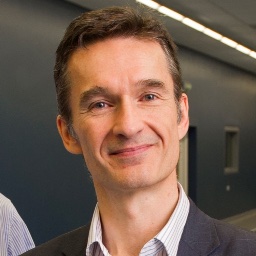
Read More About Dr. Evetts
For close to a decade Simon led the Medical Projects & Technology Unit, a multidisciplinary team at the European Astronaut Centre in Cologne, Germany, which helped maintain the health of European astronauts on Earth and in space. Since leaving EAC he has been on the Board of Directors of Blue Abyss, which is establishing extreme environment facilities to facilitate the research, training and evaluation of technology and human operations in the depths of our oceans and in Space. Simon has been passionate about the development of UK human spaceflight activities over the last 30 years, co-founding organisations such as the UK Space Life and Biomedical Sciences Association, and the UK Space Environments Association as a result. He is a Visiting Senior Lecturer at Kings College London, a Visiting Professor at Northumbria University, and a Fellow of the Royal Aeronautical Society.
Thomas A. E. Andersen
CEO, Danish Aerospace Company A/S
Thomas A. E. Andersen is the CEO of Danish Aerospace Company A/S (DAC), a provider of medical monitoring and Exercise Equipment for more than 30 years to both ESA & NASA. He has been with the company for 35 years and has a Master of Science in Electronic Engineering and have worked on numerous exercise, scientific and medical monitoring equipment developments for DAC, and the past 11 years as CEO.
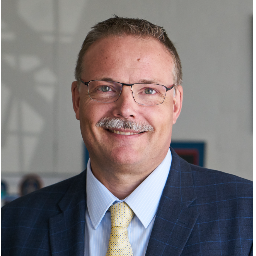
Moderators
Jennifer Fogarty, Ph.D.
Chief Scientist, Baylor College of Medicine, Translational Research Institute for Space Health (TRISH)
Jennifer Fogarty, Ph.D. is the Chief Scientific Officer for the Translational Research Institute for Space Health (TRISH) at Baylor College of Medicine and a former Chief Scientist of the NASA Human Research Program. Dr. Fogarty has more than twenty years of operational, science strategy, and research experience in medical physiology and human health and performance in extreme environments. Her mission is to improve health, performance, and quality of life by increasing access to high-quality healthcare in space and on Earth, and empowering astronauts, patients, and medical providers with evidenced-based precision medicine and technologies.

Read More About Dr. Fogarty
As Chief Scientist of TRISH, Dr. Fogarty leads an innovative, high-risk research and development portfolio to address space exploration's most challenging human health and performance risks and focuses on developing and expanding medical technologies for use in remote medicine, telemedicine, and the emerging autonomous medical systems. Dr. Fogarty prioritizes communication and collaboration between industry, academia, government, commercial spaceflight programs, and international partners. She continues to value and seek partnerships to discover and assess fundamental and mechanistic discoveries that lead to innovative prevention and treatment strategies to sustain health and performance.
Dr. Fogarty received her Ph.D. in Medical Sciences from Texas A&M University College of Medicine. Other appointments include Assistant Professor at Baylor College of Medicine’s Center for Space Medicine and Department of Medicine, and Editor of the Fundamentals of Aerospace Medicine, 4th and 5th editions.
Nicole Strock, Ph.D., MS
Human Performance Scientist, (H-3PO) Laboratory, KBR/NASA
Dr. Nicole Strock is a Senior Human Performance Scientist for KBR in the Human Physiology, Performance, Protection, and Operations Laboratory (H-3PO) at NASA’s Johnson Space Center. She is currently the Principal Investigator of two NASA-funded research studies: Temporal changes in astronauts’ muscle and cardiorespiratory physiology pre, in, and post spaceflight (CIPHER- Space Physiology), a flight study designed to quantify the time course aerobic and muscular fitness changes with spaceflight; and Performance Optimization for Lunar Extravehicular Activity Readiness (POLAR), a ground study to investigate the relationship between aerobic and muscular fitness metrics with simulated EVA task performance.

Read More About Dr. Strock
She is a member of the NASA Human System Risk Board Risk team responsible for evaluating and guiding exercise countermeasure mitigation strategies for the spaceflight-induced risks to aerobic capacity and muscular strength. During her time at NASA, she has contributed to the recent update to the NASA Human Research Program Muscle and Aerobic Risk Evidence Report, as well as several NASA technical reports related to fitness standards for partial gravity, exercise requirements for Lunar exploration programs, and reliability of an in-flight muscular strength assessment. Prior to her position at NASA, Dr. Strock received a MS in Physiology, PhD in Kinesiology, and a postdoctoral appointment in the Women’s Health and Exercise Laboratory at Penn State University. Throughout her time at Penn State, her research focused on the interplay between metabolism, reproduction, and bone health in exercising women. She has published over 50 peer-reviewed scientific manuscripts, abstracts, and book chapters.
Panel: Exercise for Commercial
Brian Prejean, Ph.D
Lead, Exercise Physiology and Countermeasures, H-3PO Laboratory, KBR/NASA
Dr. Prejean is a Human Performance Scientist on KBR’s Human Health and Performance Contract in the Johnson Space Center’s Human Physiology, Performance, Protection, and Operations (H-3PO) laboratory and leads the Exercise Physiology and Countermeasures (EPC) technical area within the lab.

Read More About Dr. Prejean
Brian holds a B.S. in Exercise Physiology from Texas A&M University, and a M.S. and Ph.D. from the University of Texas at Arlington in Exercise Physiology and Kinesiology, respectively with a research focus in Applied Biomechanics, and is a Certified Strength and Conditioning Specialist through the National Strength and Conditioning Association. He also currently serves as a Risk Custodian for the muscle and aerobic deconditioning risks carried by NASA’s Human Systems Risk Board and is the Exercise Discipline Scientist for NASA’s Human Research Program.
The EPC team supports NASA’s human health and performance objectives for spaceflight in three primary areas: technology development, applied research, and exercise Subject Matter Expert (SME) support to human spaceflight program operations. The team’s overarching objective is to protect astronaut health and performance by understanding the mechanisms and consequences of spaceflight deconditioning in order to characterize mission risk as well as to optimize exercise countermeasure systems and interventions. Current efforts within the lab include the evaluation and certification of exercise systems designated for Artemis Lunar exploration missions; development of exercise system requirements for the Lunar pressurized rover vehicle; spaceflight and terrestrial research on the dose-response relationship of both spaceflight exposure as well as exercise interventions; development and implementation of standardized in-flight health and performance assessments; development of novel countermeasure technologies and strategies for optimizing astronaut health and performance outcomes.
Luke Hughes, Ph.D.
Assistant Professor in Aerospace Physiology and Rehabilitation, Northumbria University

Stuart Lee, Ph.D.
Cardiovascular Discipline and Associate Element Scientist, KBR
Stuart Lee has worked in human life sciences at NASA-Johnson Space Center (JSC) since 1992. During his first 16 years at JSC, he supported research activities in the Exercise Physiology Laboratory, and later served as a Lead Research Scientist for the Cardiovascular and Vision Laboratory. His research activities have focused on improving our understanding of cardiovascular and musculoskeletal adaptations to space flight and the development of countermeasures to protect astronaut health and performance during spaceflight and during post-mission re-adaptation to Earth.
Dr. Lee supports research and medical operations activities directed towards the human health and performance of astronauts prior to, during, and after returning from Space Shuttle, Mir, and International Space Station spaceflight missions. In 2023, he joined the Human Research Program’s Human Health Countermeasures Element in 2023 as Associate Element Scientist. Dr. Lee has authored or co-authored more than 80 peer reviewed publications, 5 book chapters, and 6 Human Research Program Evidence books.
Dr. Lee earned his Doctorate of Kinesiology in 2015 from the University of Houston, Houston, TX, Master of Science in Education (Exercise Physiology) in 1992, and Bachelor of Science in Education, (Exercise Science) in 1987, both from Virginia Polytechnic Institute and State University, Blacksburg, VA.

Mark Guilliams
Spaceflight Human Performance Consultant, KBR Retired
Mark Guilliams is a highly accomplished professional who has dedicated over 25 years of his career to NASA's Astronaut Strength and Conditioning (ASCR) group. As the Lead Strength, Conditioning, and Rehabilitation Specialist, he played a crucial role in creating strength and conditioning programs for the entire US astronaut team. Mark's contributions to the field of spaceflight exercise are truly remarkable, with numerous published articles and awards, including the Directors Award for Excellence in Space and Life Sciences and the Silver Snoopy award. He is a Registered Strength and Conditioning Coach with the highest recognition offered by the National Strength and Conditioning Association, EMERTUS. Mark has trained 23 Space Shuttle crews and 70 International Space Station crew members, and he has personally trained a significant number of astronauts. His work has been vital in the development of ASCR protocols that are still in use today.
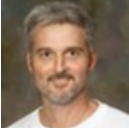
Marissa Rosenberg, Ph.D.
Senior Medical Research Engineer, Space Exploration Technologies
Marissa Rosenberg is a Senior Medical Research Engineer leading the research program at SpaceX. She has a Ph.D. in Astrophysics from Leiden University in the Netherlands and a M.Sc. in Space Physiology & Health from King’s College London in the UK. Dr. Rosenberg spent six years at NASA Johnson Space Center studying astronauts balance and coordination immediately after they returned from the International Space Station and tracked their recovery. She used that data to quantify crew health and performance, investigate countermeasures, and assess risk for future human missions to the moon and Mars. Currently, Dr. Rosenberg is leading the research program at SpaceX, focused on expanding access to space travel and achieving multi-planetary presence for humanity.

Panel: Medical / Performance
Duncan Hughes
Chief Medical Officer, Virgin Galactic
--Chief Medical Officer at Virgin Galactic since 2022.
--Retired USAF Colonel and Chief Flight Surgeon after 28-year career as active duty physician.
--Worked 2.5 yrs as Medical Director of an Occupational Medicine Clinic upon retiring from USAF.
--Served as subject matter expert (SME) and adjunct faculty at a Master of Public Health program for 5 years teaching 'Prevention/Control of Infectious Diseases' & 'Vaccines & Immunology' courses.
--Residency trained and board certified in 3 medical specialties: Aerospace Medicine, Occupational Medicine, and Family Medicine.
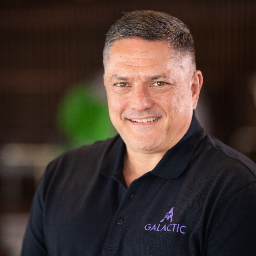
Emmanuel Urquieta, M.D., M.S.
Chief Medical Officer, Translational Research Institute for Space Health; Assistant Professor, Baylor College of Medicine
Emmanuel Urquieta, M.D., M.S., FAsMA, is Chief Medical Officer for the Translational Research Institute for Space Health (TRISH), with a dual faculty appointment as an Assistant Professor in the Department of Emergency Medicine and Center for Space Medicine at Baylor College of Medicine.
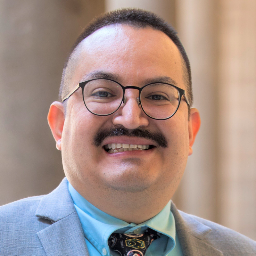
Read More About Dr. Urquieta
In his role at TRISH, he manages medical research for missions to the Moon and Mars, the commercial spaceflight program EXPAND, and analog capabilities, including partnerships with the Australian Antarctic Division.
Prior to joining TRISH, Dr. Urquieta worked for Mexico City’s Police Department as a flight surgeon, participating in hundreds of rescue missions and aeromedical evacuations. He has volunteered in medical missions around the world. In 2017, Dr. Urquieta was a crew member of the Human Exploration Research Analog (HERA) XI mission at NASA Johnson Space Center, spending 30 days in a capsule simulating a deep space long-duration mission. He is a Fellow of the Aerospace Medical Association, and has authored and co-authored dozens of publications in peer-reviewed scientific journals.
Dr. Urquieta holds a medical degree and specialty in emergency medicine from Anahuac University in Mexico City and an M.S. in aerospace medicine from Wright State University in Dayton, Ohio. Dr. Urquieta frequently appears at scientific meetings and connects with reporters to discuss effects of space on the human body and potential interventions to promote healthier space exploration.
Joan Saary, MD, Ph.D., FRCPC
Director, Division of Occupational Medicine, Dept of Medicine, University of Toronto, University of Toronto, Can Armed Forces, and CSA
Dr. Saary is an Occupational Medicine specialist with niche expertise in aerospace and diving medicine, who also holds an MSc in clinical psychology and PhD in medical science. She is the Director of the Division of Occupational Medicine at the University of Toronto where she is developing an Aerospace Medicine Fellowship. She is also the Chair of Aerospace Medicine at the Royal College of Physicians and Surgeons of Canada, and a consultant to both the Canadian Armed Forces and the Canadian Space Agency. She was named one of Canada’s “Top 25 Women in Defence” in 2021, is a fellow of both ACOEM and AsMA, and has represented Canada internationally in both occupational and aerospace medicine roles.
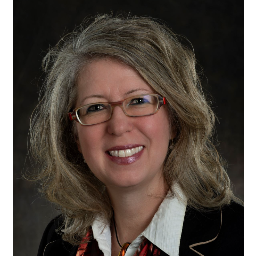
Michael Harrison
Chief Medical Officer, Axiom Space, Inc.
Dr. Harrison is the Chief Medical Officer at Axiom Space in Houston TX and practices medicine as faculty at Mayo Clinic in Jacksonville FL in the departments of emergency medicine, critical care medicine, and aerospace medicine. He has served as a flight surgeon supporting multiple commercial spaceflight missions with companies including SpaceX, Virgin Galactic, and Axiom Space Dr. Harrison’s research interests include spaceflight, military aviation, decompression sickness, high-altitude physiology and he has published more than 30 peer-reviewed articles. He is a fellow of the Aerospace Medical Association, a three-time Ironman finisher; a NITROX-certified rescue diver; and an instrument-rated private pilot.
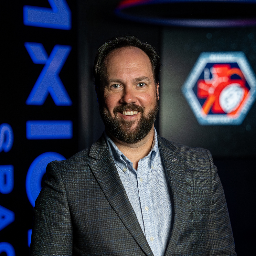
Dana Levin
Flight Surgeon/Medical Director, Vast Space
Dana Levin MD MPH is a board certified Aerospace and Emergency Medicine Physician working with Vast to help launch the first commercial space station and develop artificial gravity systems to counter the health threats of spaceflight. Dana has more than a decade of experience working to ensure human health in Space and other extreme environments and he cofounded the Baylor College of Medicine - Massachusetts General Hospital Space Medicine Fellowship to help prepare and train physicians for the demands of space medicine in the 21st century.
He has supported expeditions and travelled to every continent on Earth and has worked in every aspect of Space Medicine from Engineering Systems Design to Spaceflight Operations to Clinical Research to Education. His research and consulting projects include artificial intelligence applications for Clinical Decision Support, extreme environment clinical medicine, artificial gravity, and regenerable, on demand resources and pharmaceuticals for autonomous medical systems.
Dana is also a Scientific Diver, Private Pilot, Percussionist, Rock Climber, Sailboat Captain, and an avid Science Fiction fan.

Rahul Suresh, MD
Commercial LEO Development Program, Program Medical Officer, NASA
Dr. Rahul Suresh is an operational Flight Surgeon at the NASA Johnson Space Center (JSC) in Houston, TX. He is the Program Medical Officer for the Commercial LEO Development Program and is responsible for providing medical operations expertise and guidance on medical policy development for NASA’s LEO commercialization efforts. He serves as the co-lead of the Exploration Medical Integrated Product Team (XMIPT), helping develop NASA’s strategy and managing a portfolio of projects intended to close medical capability gaps for future exploration missions.
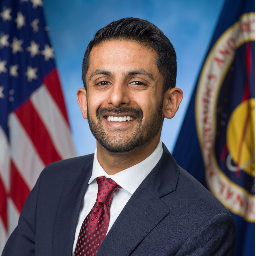
Read More About Dr. Suresh
He is also a certified SpaceX Hawthorne Mission Control specialist providing medical support to NASA crew during Crew Dragon launch and landing operations. He has served as a crew surgeon for Expeditions 61-62 (Jessica Meir) and Expeditions 66-67 (Raja Chari, Tom Marshburn, Kayla Barron) and provides longitudinal care to astronauts and pilots at the NASA JSC Flight Medicine Clinic. He is a practicing internal medicine physician at local medical facilities and is a designated, senior Aeromedical Examiner for the Federal Aviation Administration. He is a Fellow of the Aerospace Medical Association and currently serves as the President of the Space Medicine Association.
Dr. Suresh has received a number of NASA awards including the NASA Exceptional Achievement Medal and NASA Silver Achievement Medal for his outstanding mission medical operations support. Dr. Suresh earned his Bachelor of Arts degree in Biochemistry and Cell Biology from Rice University in Houston, Texas. He returned to his hometown of Rochester, Minnesota where he received his Doctor of Medicine degree and a Master of Clinical and Translational Research degree from the Mayo Clinic College of Medicine and Science. He completed residency training and earned a Master of Public Health degree at the University Texas Medical Branch (UTMB) in Galveston, Texas. He is currently board certified in Internal Medicine and Aerospace Medicine.
